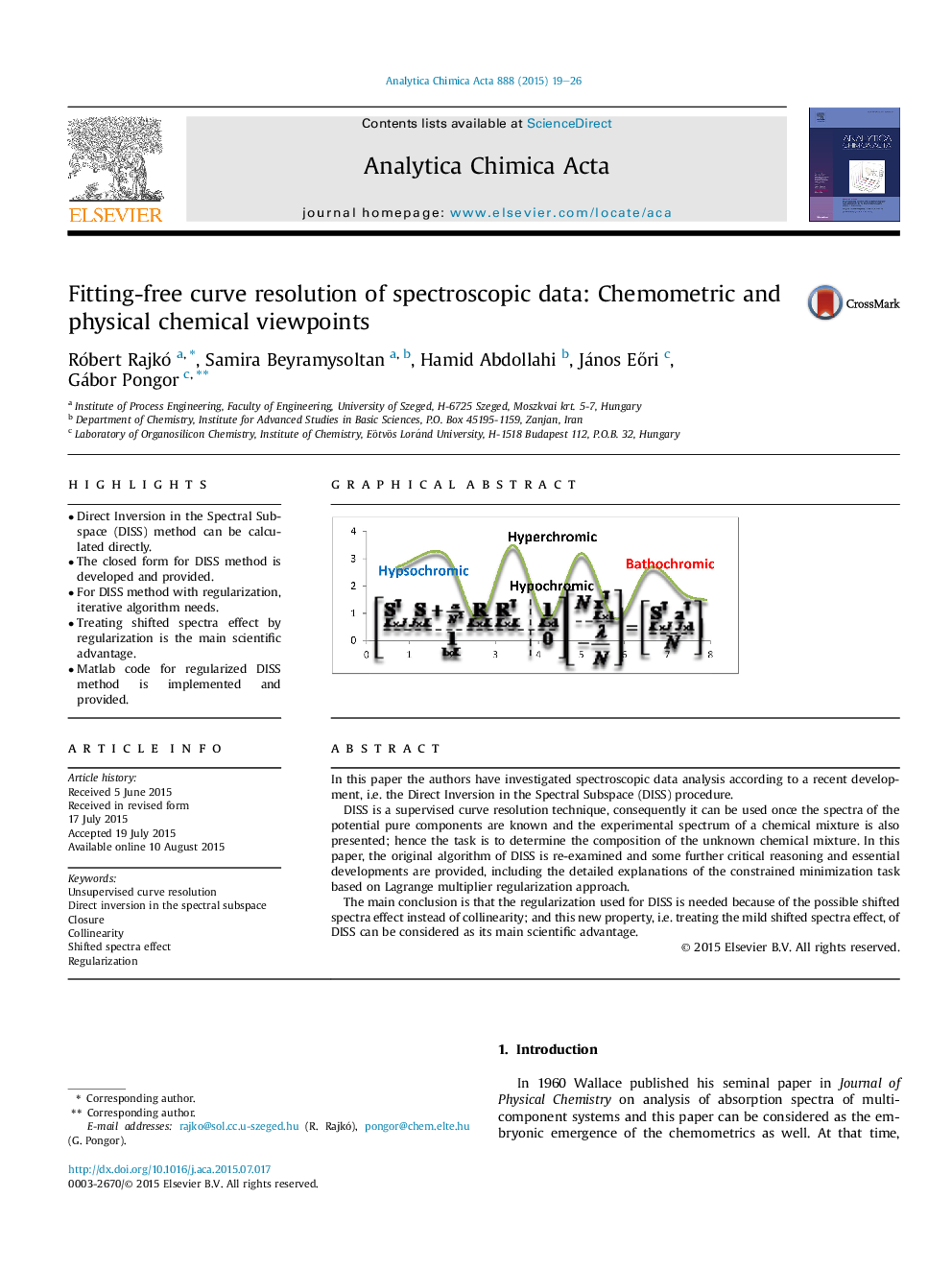| Article ID | Journal | Published Year | Pages | File Type |
|---|---|---|---|---|
| 1163601 | Analytica Chimica Acta | 2015 | 8 Pages |
•Direct Inversion in the Spectral Subspace (DISS) method can be calculated directly.•The closed form for DISS method is developed and provided.•For DISS method with regularization, iterative algorithm needs.•Treating shifted spectra effect by regularization is the main scientific advantage.•Matlab code for regularized DISS method is implemented and provided.
In this paper the authors have investigated spectroscopic data analysis according to a recent development, i.e. the Direct Inversion in the Spectral Subspace (DISS) procedure.DISS is a supervised curve resolution technique, consequently it can be used once the spectra of the potential pure components are known and the experimental spectrum of a chemical mixture is also presented; hence the task is to determine the composition of the unknown chemical mixture. In this paper, the original algorithm of DISS is re-examined and some further critical reasoning and essential developments are provided, including the detailed explanations of the constrained minimization task based on Lagrange multiplier regularization approach.The main conclusion is that the regularization used for DISS is needed because of the possible shifted spectra effect instead of collinearity; and this new property, i.e. treating the mild shifted spectra effect, of DISS can be considered as its main scientific advantage.
Graphical abstractFigure optionsDownload full-size imageDownload as PowerPoint slide
